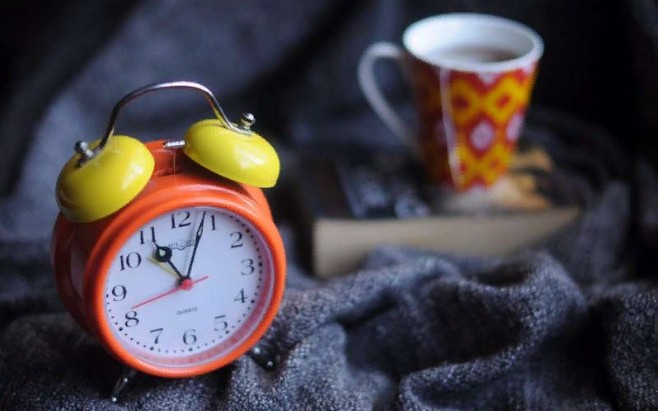As Americans prepare to advance their clocks by one hour in mid-March, I’m anticipating the annual media coverage of the interruptions to everyday routines caused by the move from regular to daylight saving time.
Approximately a third of Americans say they dread the twice-yearly time changes. An overwhelming majority of 63 percent to 16 percent would prefer to see them fully phased out.
However, the consequences are more than just inconvenient. Researchers are discovering that “springing forward” in March has major negative health consequences.
I’m the director of our sleep division and a professor of neurology and pediatrics at Vanderbilt University Medical Center in Nashville, Tennessee.
My co-authors and I analyzed the evidence associating the annual switch to daylight saving time to higher strokes, heart attacks, and teen sleep deprivation in a commentary published in the journal JAMA Neurology in 2020.
My colleagues and I feel that the science demonstrating these linkages is solid, and that the data provides a good case for adopting permanent standard time countrywide, as I said at a recent Congressional hearing, based on a large body of research.
Sleep deprivation is linked to a decline in health.
The transition from daylight saving time to standard time, which occurs every November by changing the clocks back one hour, is a rather painless process. While some people may feel thrown off and require a few weeks to recover, research has shown little evidence that it has major health consequences.
Springing forward, on the other hand, is more taxing on the body. This is due to the fact that our clocks have been set an hour later; in other words, it feels like 7 a.m. even though our clocks read 8 a.m.
So it’s a nearly eight-month-long transition to later morning light, not just for the day of the switch or a few weeks afterward. This is significant since morning light is beneficial for assisting in the establishment of the body’s natural rhythms: it wakes us up and enhances alertness.
Although the specific causes are unknown, light’s impact on rising levels of cortisol, a hormone that affects the stress response, or light’s effect on the amygdala, a portion of the brain involved in emotions, could be to blame.
Exposure to light later in the evening, on the other hand, delays the production of melatonin, a drowsiness-inducing hormone in the brain. This can disrupt sleep and cause us to sleep less in general, with the effect lasting even after most people adjust to losing an hour of sleep at the start of daylight saving time.
Because puberty causes melatonin to be released later at night, causing a delay in the natural signal that helps people fall asleep, adolescents are more vulnerable to sleep issues caused by daylight saving time’s increased evening light. This melatonin shift that occurs throughout puberty lasts into our twenties.
Adolescents may also suffer from chronic sleep deprivation as a result of their school, sports, and social activities schedules. Many youngsters, for example, begin school around 8:00 a.m. or earlier. As a result, many young people rise up and walk to school in the dark during daylight saving time.
The effect of the ‘western edge’
People’s perceptions of daylight saving time are influenced by their geographic location. People who live on the western frontier of a time zone, who get light later in the morning and later in the evening, get less sleep than those who live on the eastern margin of a time zone, according to one study.
Residents on the western fringe had greater incidences of obesity, diabetes, heart disease, and breast cancer, as well as lower per capita income and higher health-care costs, according to this study. Other studies have discovered that cancer rates are greater on the western margin of a time zone.
Scientists believe that a combination of persistent sleep deprivation and “circadian misalignment” is to blame for these health issues.
Circadian misalignment is a misalignment of our biological cycles with the outside world’s timing. To put it another way, the schedule of daily work, school, and sleep routines is determined by the clock rather than the rising and setting of the sun.
A brief overview of daylight saving time’s history
During World War I, World War II, and the early 1970s energy crises, Congress enacted daylight saving time. The idea was that by allowing more light into the afternoon, it would save energy by reducing the demand for electric lighting. This assumption has now been disproved, as heating demands can rise in the morning in the winter and air conditioning needs can rise in the late afternoon in the summer.
Another pro-daylight-saving argument is that when there is more light at the end of the day, crime rates decrease. While this is true, the difference is minor, and the health effects appear to exceed the lower crime rates.
After WWII, state governments were in charge of determining the start and end dates for daylight saving time. However, Congress approved the Uniform Time Act in 1966 as a result of this, which caused numerous railroad scheduling and safety issues.
From the last Sunday in April to the last Sunday in October, this statute established the national dates for daylight saving time.
The Uniform Time Act was changed in 2007 to extend daylight saving time from the second Sunday in March to the first Sunday in November, which dates are still in place today.
States and territories, on the other hand, have the option of opting out of daylight saving time under the legislation. Along with Puerto Rico, the US Virgin Islands, the Northern Mariana Islands, Guam, and American Samoa, Arizona and Hawaii are on permanent standard time. Many other states are now debating whether or not to stop falling behind and start moving forward.
The decision then arises whether permanent daylight saving time or permanent standard time should be chosen.
The compelling case for establishing a permanent standard time
Americans are divided on whether perpetual daylight saving time or permanent standard time is preferable. My colleagues and I, on the other hand, believe that the scientific evidence for creating a permanent standard time is compelling.
With the sun directly overhead at or near noon, standard time most nearly approximates natural light. During daylight saving time, which runs from March through November, the natural light is shifted one hour later than usual.
Given the overwhelming evidence that daylight saving time is unnatural and unhealthy, I believe we should abandon it in favor of permanent standard time.





